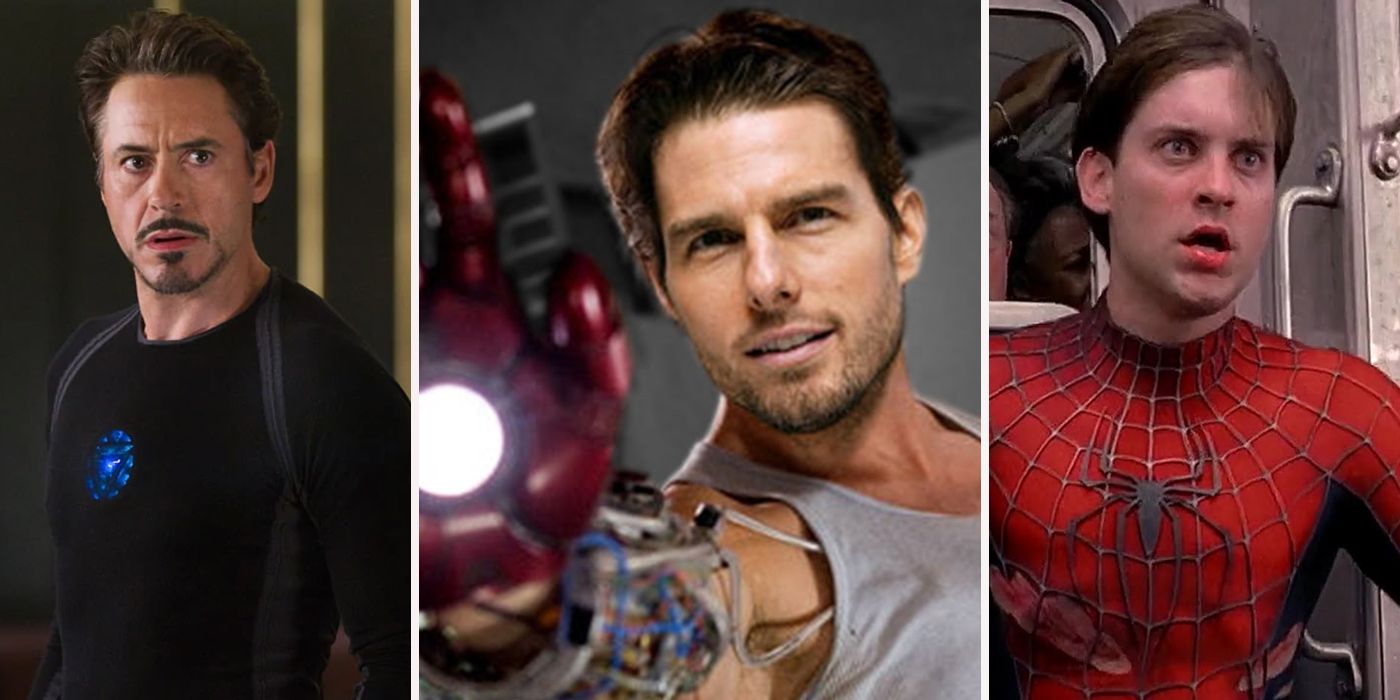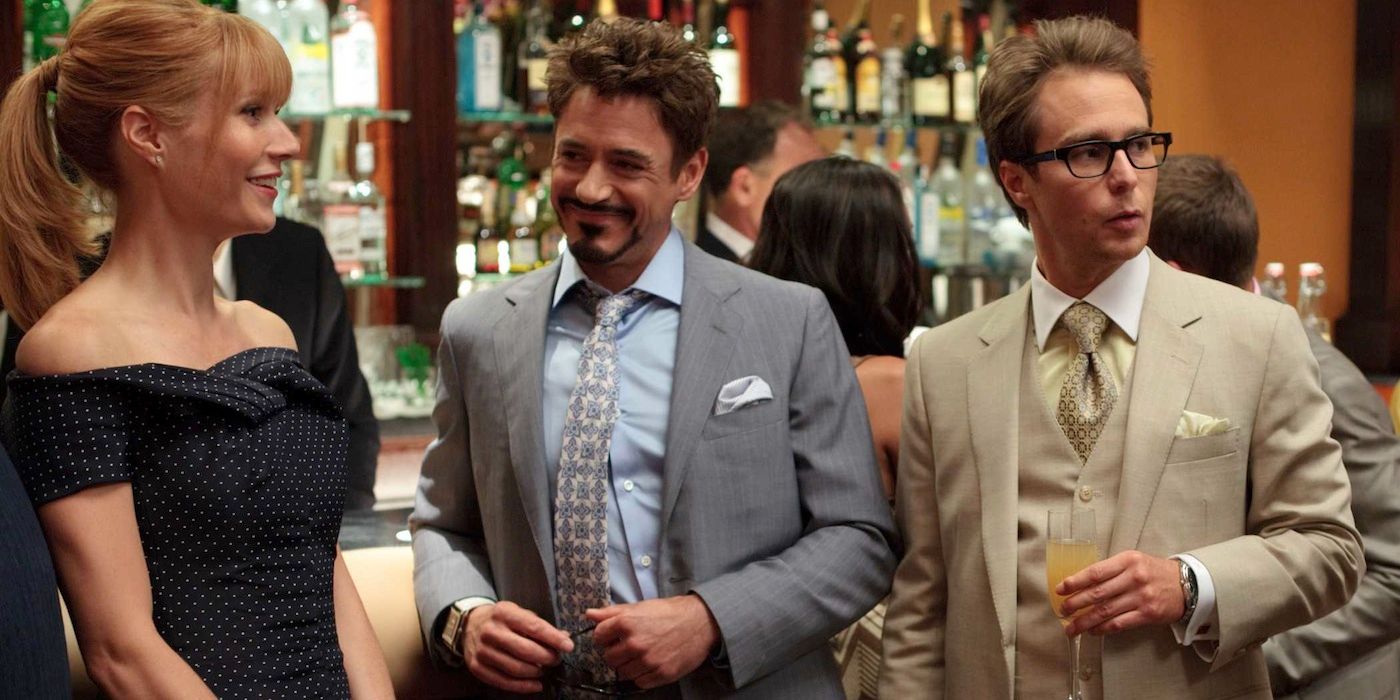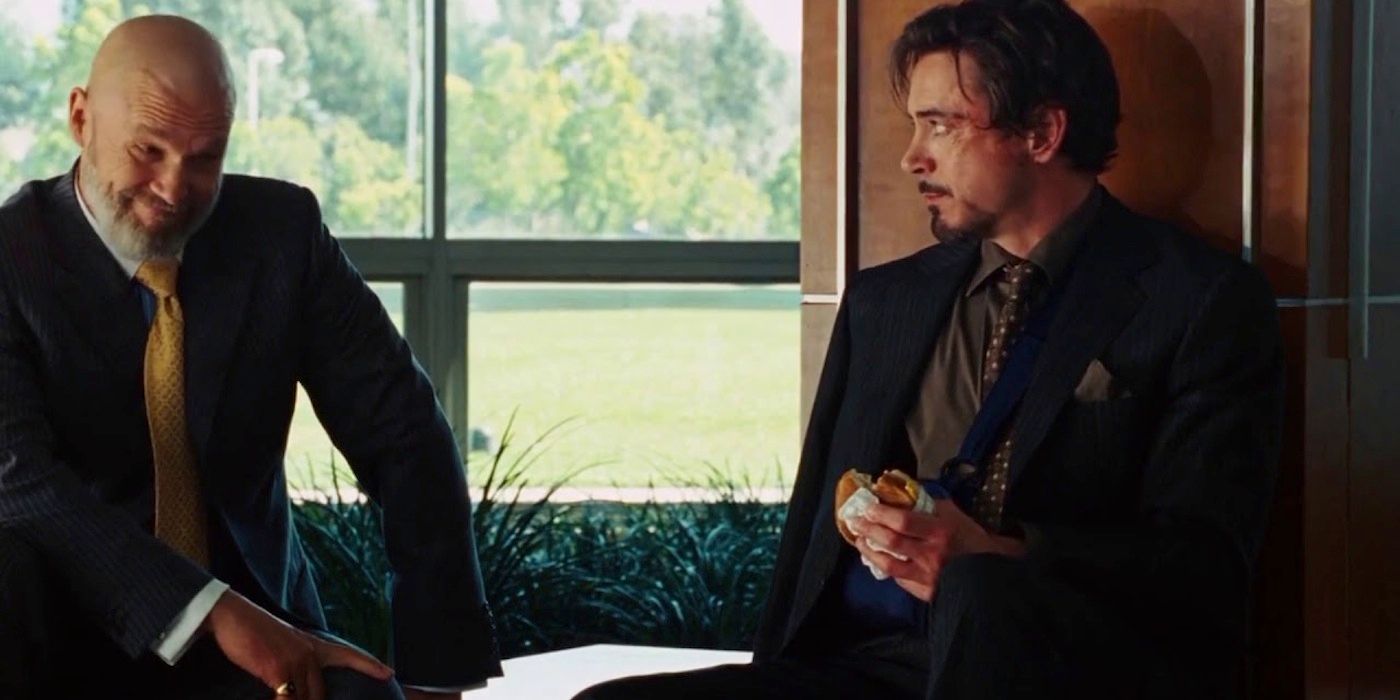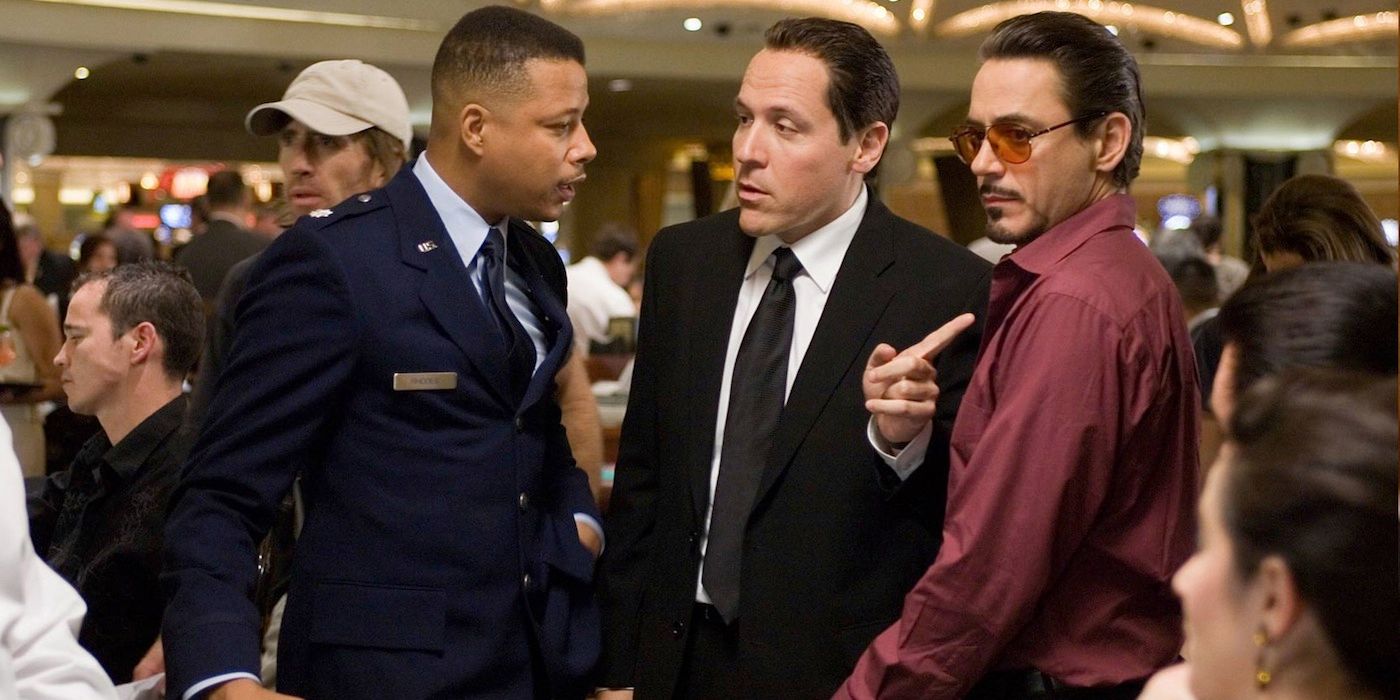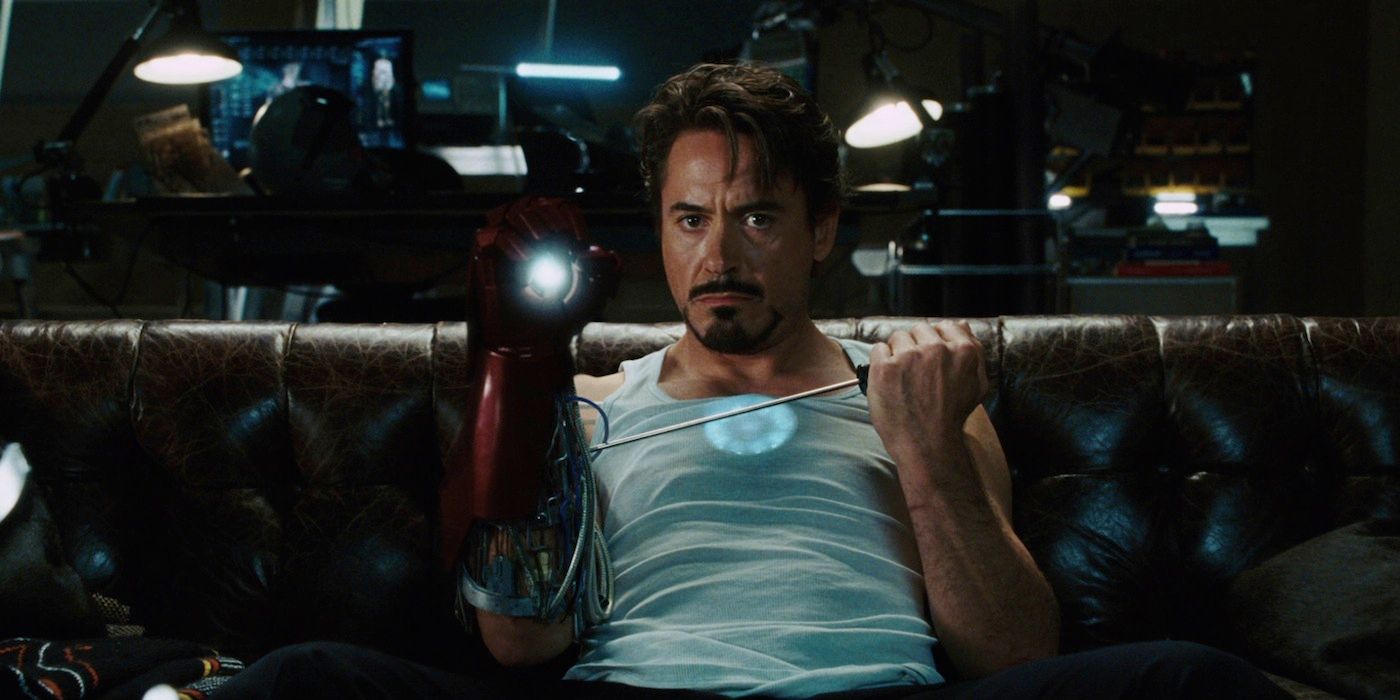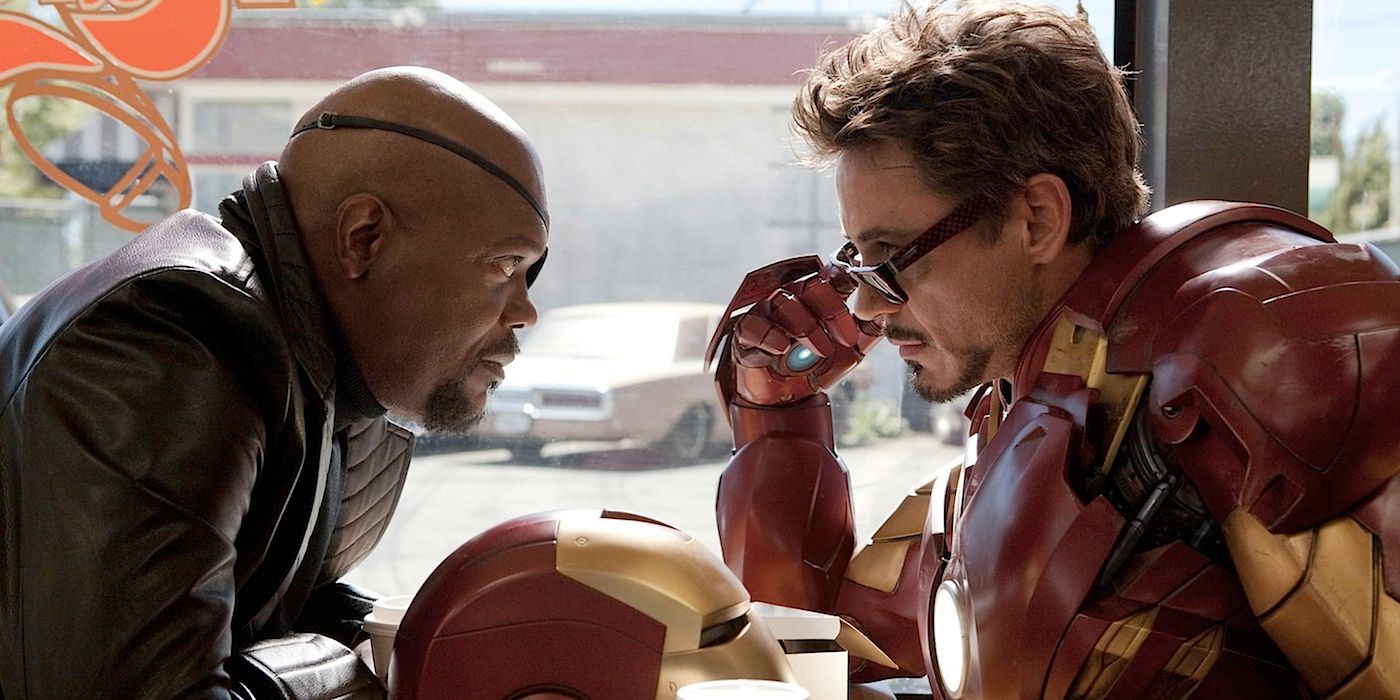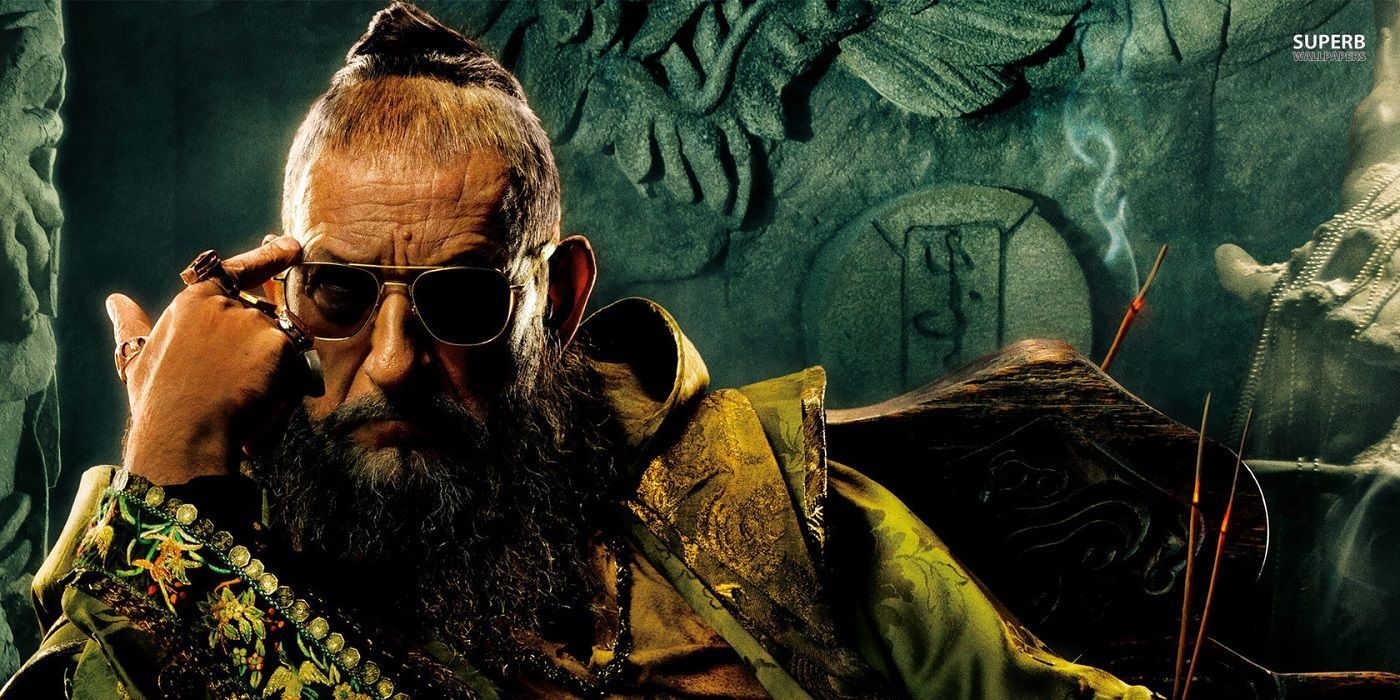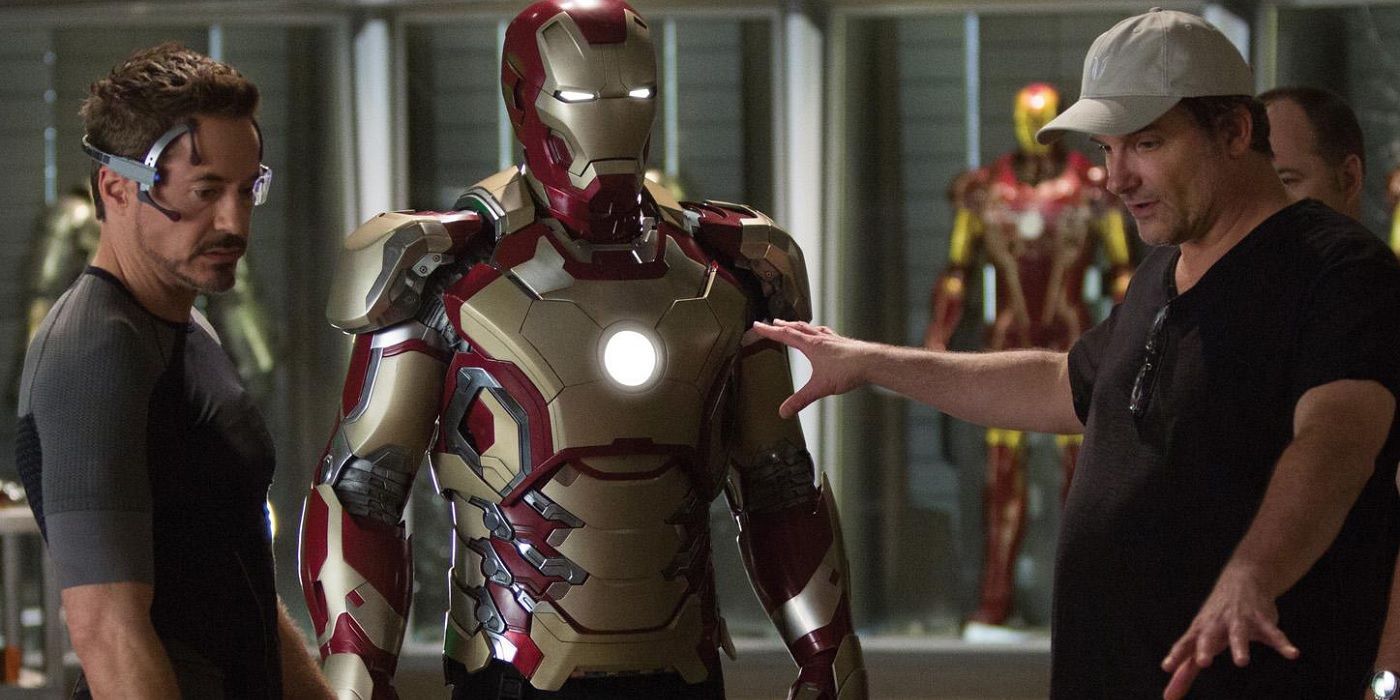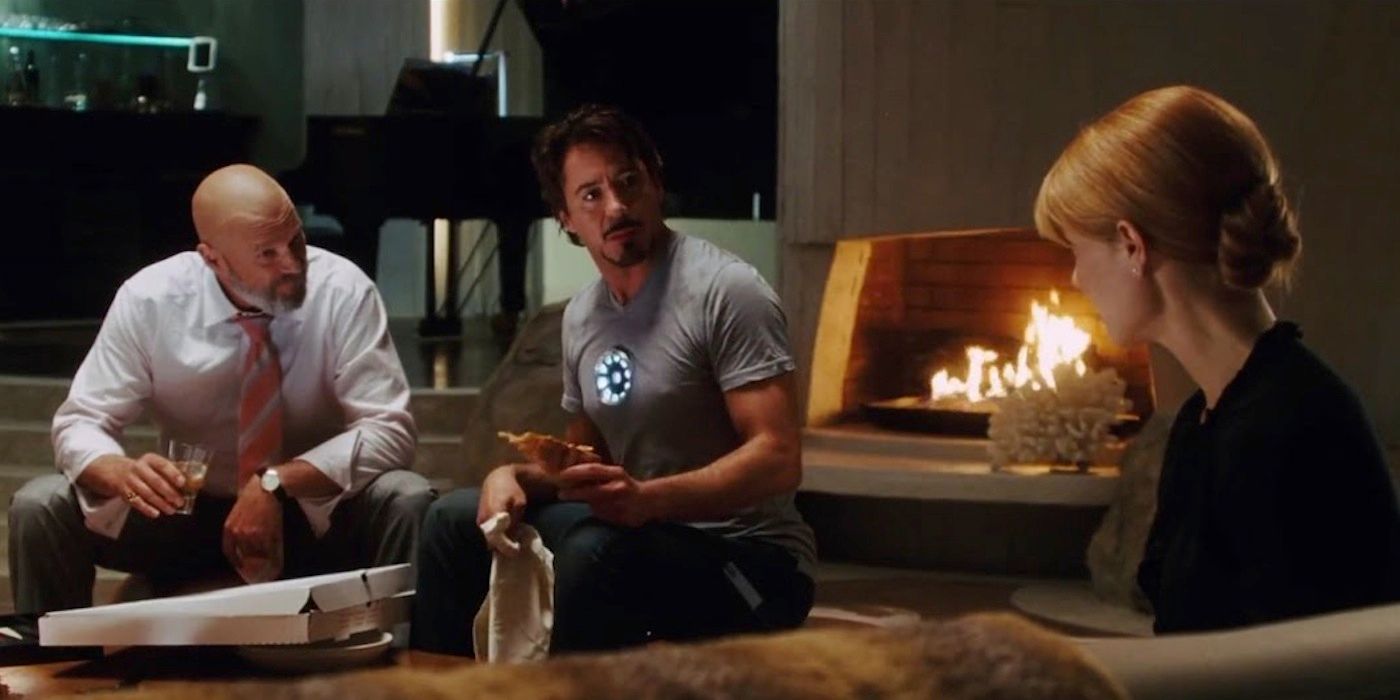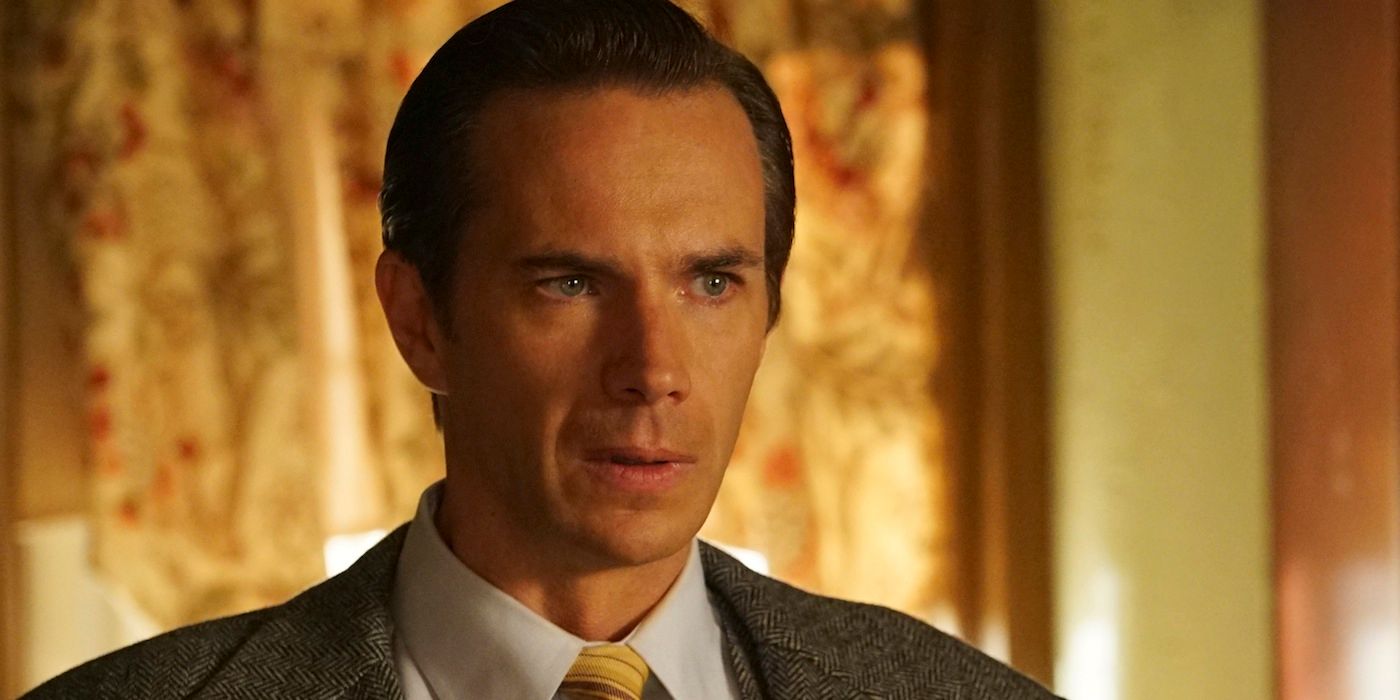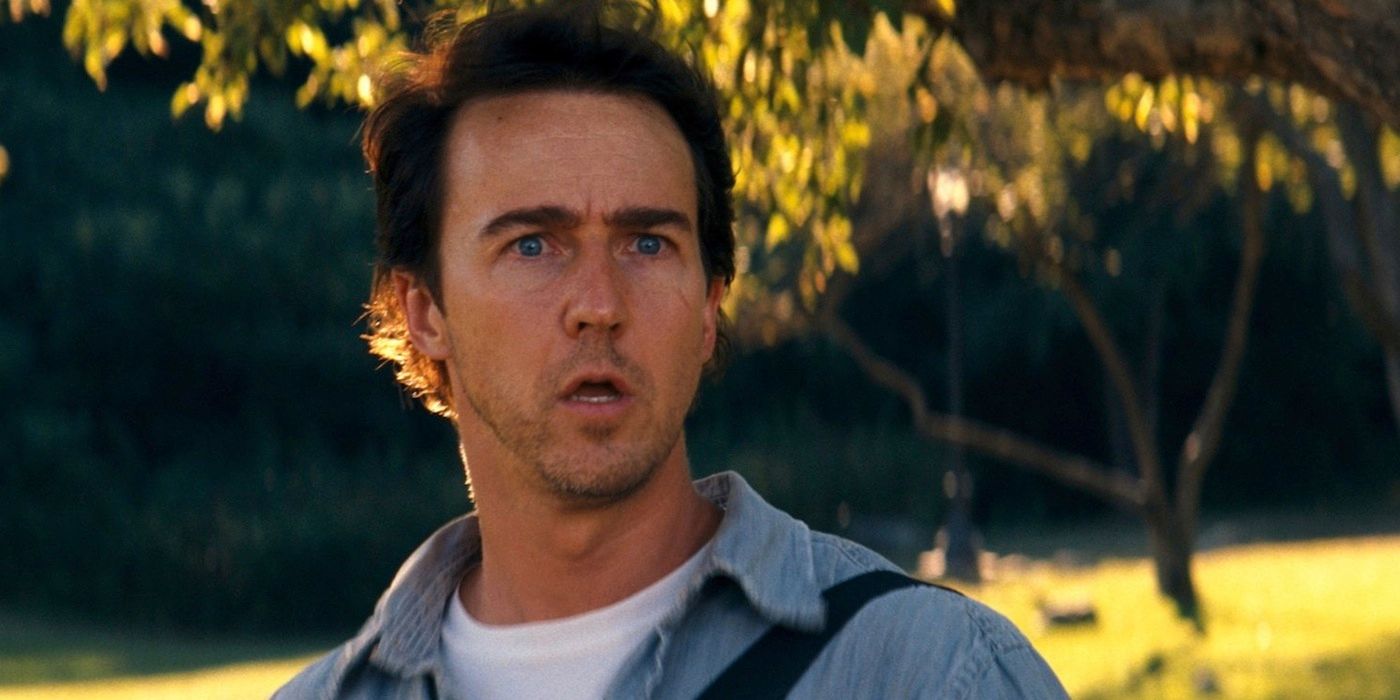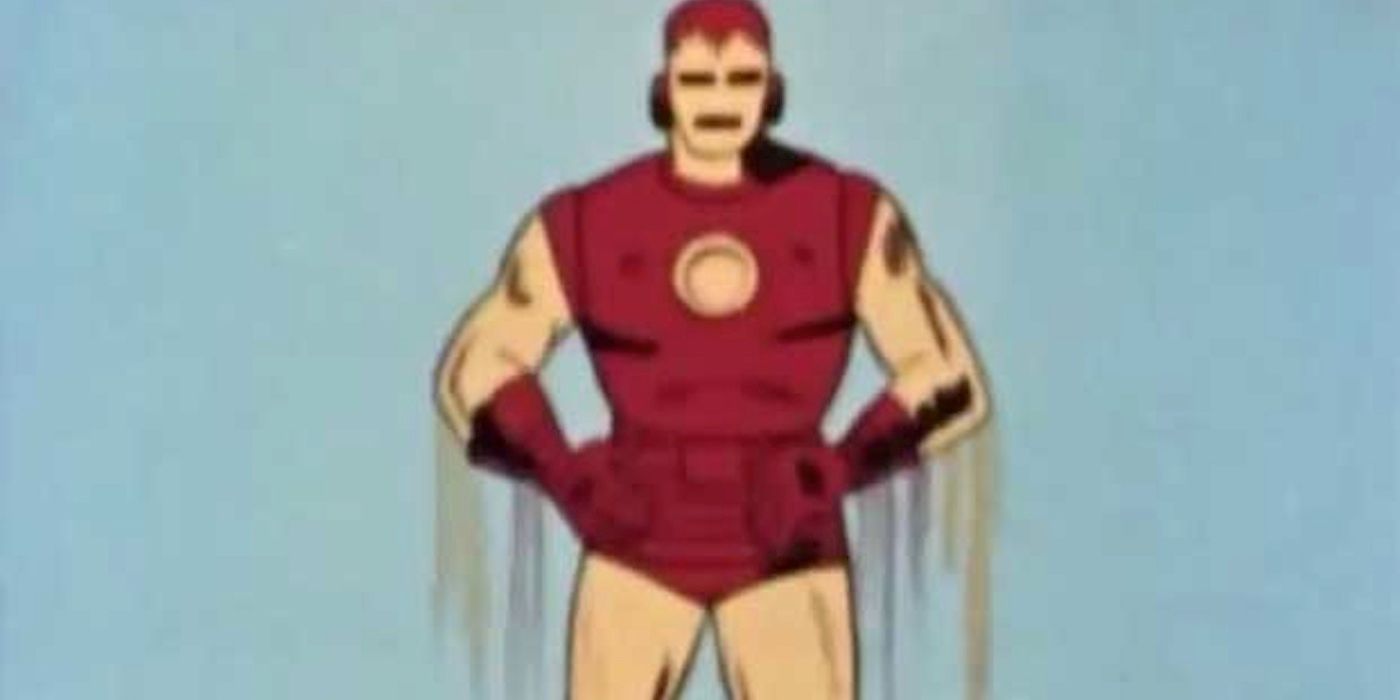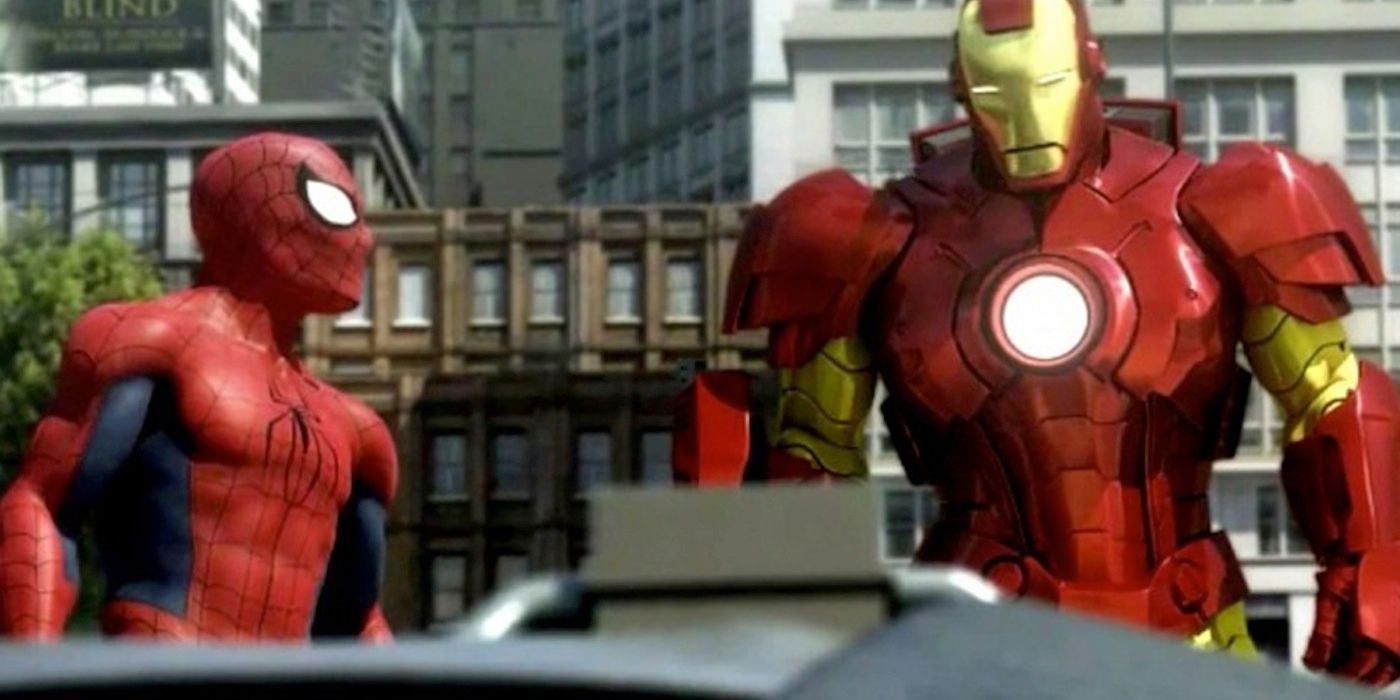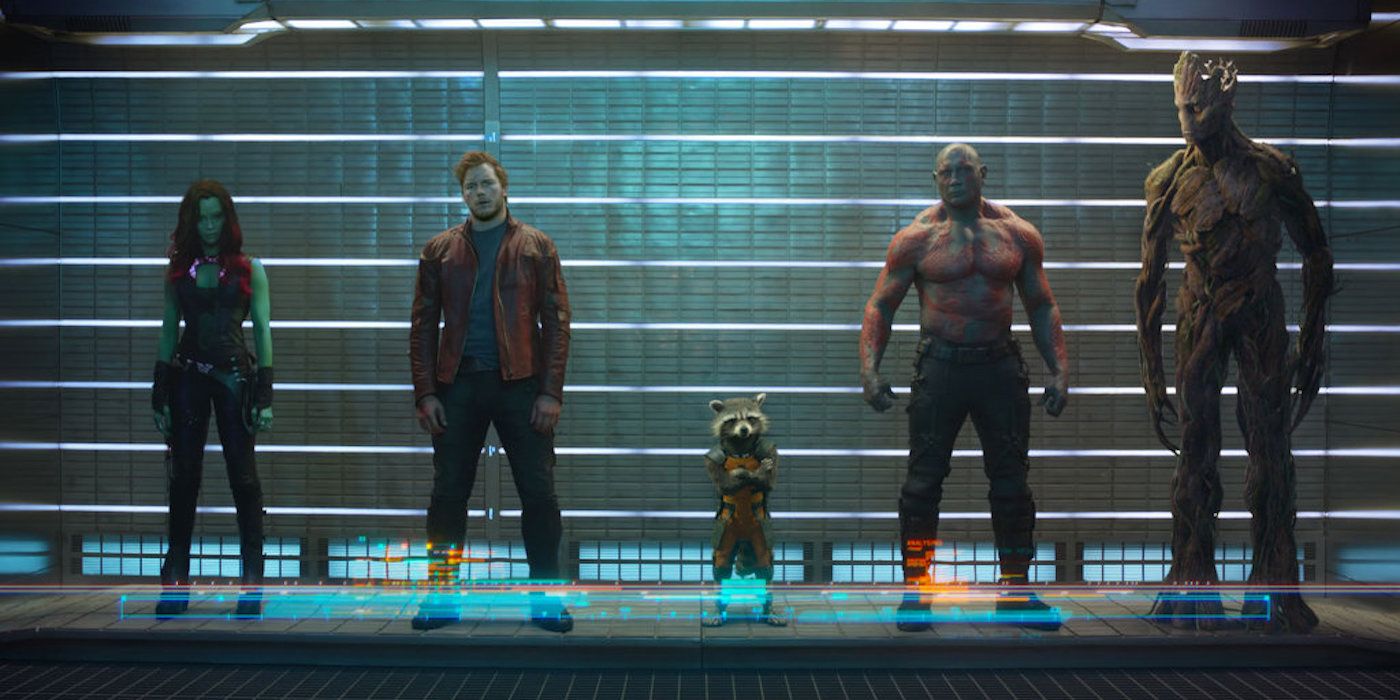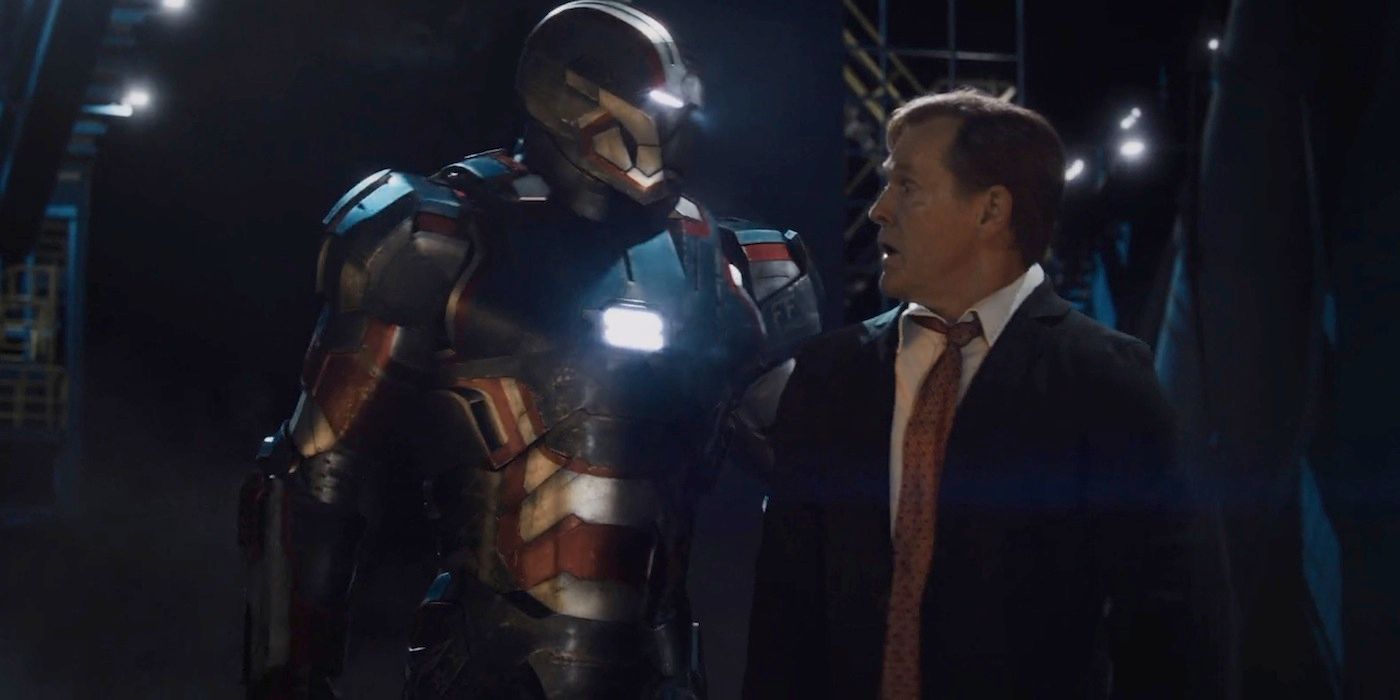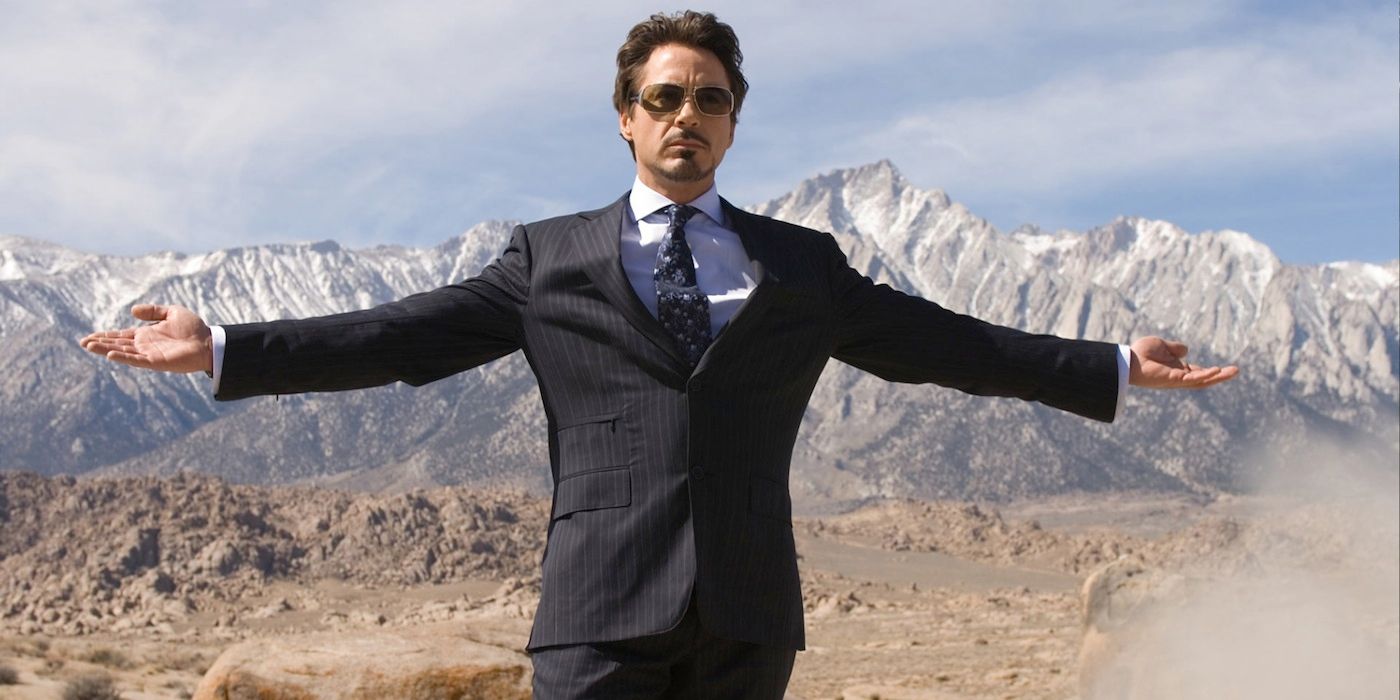Is there a more beloved superhero working today than Iron Man? As I’m sure the self-proclaimed “genius, billionaire, playboy, philanthropist” would tell you, no. No, there is not. His big screen debut in 2008 was a watershed moment for the genre, bringing playful humor and a colorful sense of adventure to the table at a time when comic book films were beginning to wear thin. Since then, Iron Man has spearheaded the colossal force that is the Marvel Cinematic Universe, serving as both its elder statesman and its biggest box office draw.
With Avengers: Infinity War drawing closer, and the future of Iron Man and his equally charming doppelgänger Robert Downey, Jr. growing uncertain, we decided to look back at the standalone trilogy that helped make the MCU what it is today.
From casting rumors and cancelled post-credits scenes to Jon Favreau’s original plans for The Mandarin (!), here are 15 Things You Didn’t Know About the Iron Man Trilogy.
Several Actors Were Offered the Role of Tony Stark
While the thought of anyone but Downey in the suit seems preposterous now, director Jon Favreau revealed that the studio was keen on casting a bigger, more bankable name leading up to the first film. Tom Cruise was in talks to star and produce as far back as 2004, before production stalled and he went on to star in Steven Spielberg’s War of the Worlds. Next came comic book super-fan Nicolas Cage, though his flirtation with the role was brief, as he opted to appear in 2006’s lackluster Ghost Rider. One can only imagine what his take on the character would’ve been like.
Other actors who were reportedly offered the role include Hugh Jackman, Clive Owen, and Sam Rockwell, the latter of whom would go on to play a villainous Tony Stark-lite, Justin Hammer, in Iron Man 2. Favreau continued to push for Downey, however, who was his first choice, and eventually won over the studio under strict conditions that the actor undergo a lengthy workout regiment and martial arts training. Downey obliged and promptly set in motion one of the biggest comeback stories in film history.
Incidents from Downey’s Past Were Used to Shape the Character
It's no secret that Robert Downey, Jr. has had his low points. He was arrested for substamce possession countless times between 1996 and 2001, and was briefly sentenced to prison in 1999 before his case was overturned. But this troubled past was exactly what Favreau wanted to bring to the character of Tony Stark.
Downey embraced the idea wholeheartedly, offering suggestions and bringing in experiences from his own life during production. Photos of him as a young man were used for the film’s opening montage, and Stark’s insistence on eating a cheeseburger before his press conference was meant to echo an incident that Downey had back in 2003.
According to Empire Magazine, the actor ate a Burger King cheeseburger that was so disgusting, it made him rethink his life, and dump his remaining drugs in the ocean. He included it in the scene because Stark experiences a similar epiphany regarding the future of his company.
The Dialogue in Iron Man Was Mostly Improvised
Ironically, given that Jon Favreau had broken through as a writer with 1996’s Swingers, the trickiest aspect of Iron Man was its script. Due to the focus on story and action, the dialogue scenes were still incomplete by the time filming had begun, forcing Favreau and his actors to improvise many of them on the set. These scenes were shot using two cameras, to capture lines that were improvised in the moment, while Downey, an actor known for his quick wit, would often request multiple takes of a line to try out something different.
The results, according to Favreau, gave the film a freshness that was not characteristic of the superhero genre at the time. He described Iron Man and its sequel as "a kind of independent film-espionage thriller crossbreed,” citing Robert Altman, a director known for his extensive use of improvisation, as a major influence. Favreau’s enthusiasm even won over Jeff Bridges, who, after expressing concern over the lack of script, called the experience “fun” and likened it to a "two hundred million dollar student film.”
Iron Man Originally Crossed Over With Spider-Man 2
An early draft of the Iron Man script dared to cross studio lines that have since crumbled under the weight of the MCU’s power. The plan was to reveal that Tony Stark, inventor extraordinaire, was actually the creator of Dr. Otto Octavius’s tentacles in Spider-Man 2, ostensibly bridging the gap between the MCU and Sony’s Spiderverse before either term was even invented. From a marketing standpoint, it made sense-- Iron Man was struggling to gain momentum before its release and hitching itself to a hot property like Spider-Man would have definitely increased its profile.
Needless to say, the reveal was scrapped, as the studio did not own the rights to the Octavius character. It turned out to be for the best, however, as the early crossover would have cancelled out any chance of seeing Tom Holland swing into action as Spidey in Captain America: Civil War and Spider-Man: Homecoming. Besides, as a recent MCU retcon has revealed, the character appears as a little boy in the finale of Iron Man 2.
Nick Fury Was Nearly Recast in Iron Man 2
While Iron Man 2 generally goes down as the weakest link in the trilogy, with too much time spent building up to The Avengers, it could have been much, much worse. Like, Samuel L. Jackson not playing Nick Fury, worse. In 2009, Jackson told Hero Complex that "There was a huge kind of negotiation that broke down. I don’t know. Maybe I won’t be Nick Fury. Maybe somebody else will be Nick Fury or maybe Nick Fury won’t be in it. There seems to be an economic crisis in the Marvel Comics world so [they’re saying to me], ‘We’re not making that deal.’"
Jackson went on to say that while Favreau promised him more screen time after his post-credits scene in the first film, he considered walking away from the role, citing the confusion as a leading factor. Thankfully, the studio was able to sort things out and, when the dust had settled, they offered Jackson a landmark nine-picture deal that would see him play Nick Fury for the foreseeable future.
As of 2018, Jackson has appeared in six MCU films, and is slated to reprise his role in Captain Marvel and the untitled Avengers 4.
The Mandarin Was Intended As the Trilogy’s Overarching Villain
The depiction of The Mandarin in Iron Man 3 has become infamous within the MCU. It’s been hailed as brilliant by some, offensive by others, and divisive by all. It toyed with everything we thought we knew about the iconic villain, though, according to Favreau, this wasn’t the original plan. The director envisioned The Mandarin as the overarching villain of the series back in 2008, citing Emperor Palpatine as a prime example of someone who was working in the shadows and was too big to reveal early on:
Favreau included references to The Mandarin in the first film, with secondary villain Raza wearing a similar ring on his pinky finger, but the overarching thread was largely dropped until Iron Man 3, when writer-director Shane Black came in and re-wrote the character.
Shane Black Was Involved in Making All Three Films
Shane Black is widely recognized as the brains behind Iron Man 3, but what many people may not know is that he was involved in the franchise from the very beginning. It was Black’s 2005 film Kiss Kiss Bang Bang that first brought Downey to Favreau’s attention, and, according to the actor, it was Black who helped him prepare for the role. "Shane was one of my lifelines while making the first Iron Man," Downey told The Hollywood Reporter, "I would call to ask him about the script and dialogue. He was probably reading a noir paperback while we were talking, but his suggestions were brilliant."
Black served as an uncredited adviser on both Iron Man and Iron Man 2. Downey elaborated on his contributions with Esquire, saying “Favreau and I used to call Shane and ask him for advice about scenes, and he would give us these metaphors and sometimes direct comments and he would never take a penny for it — although he did once ask for a piece of well-done salmon and some blueberries." Seems like the least they could do.
Iron Man Takes Place in the Same Universe as Elf
While there are countless easter eggs and references to other MCU films in Iron Man, one that may have slipped under the radar calls back to another Jon Favreau joint, the 2003 comedy Elf. About an hour into the film, Obadiah Stane (Bridges) brings Stark a box of pizza from New York City. The box is marked “Ray’s” in reference to the real life chain of pizza places and serves to connect to the scene in Elf when Santa Claus recommends “Ray’s” to Buddy the Elf. The latter also takes places in New York City, further tightening the connection.
While it may not lead to the creation of a greater “Favreauverse” in the vein of peers like Kevin Smith or Quentin Tarantino, it does provide a fun idea in that Tony Stark could, ostensibly, bump into Will Ferrell’s Buddy if he ever drops by New York for another slice of pizza. Or perhaps even shawarma, if we are to go by the post-credits scene from The Avengers.
J.A.R.V.I.S. Was Modeled After Stark’s Butler Edwin Jarvis
Alfred Pennyworth is the most famous fictional butler in history, largely due to the fact that he works for Batman/Bruce Wayne. Marvel was painfully aware of this during production of the first Iron Man, and, fearing that too many parallels would be drawn between Stark and Wayne, another “billionaire, playboy, genius, philanthropist,” decided to take Stark’s butler Edwin Jarvis and convert him into the A.I. we now know and love. The surname was kept as an homage, though Favreau added an acronym that was in step with the program’s dry delivery: Just A Rather Very Intelligent System.
Fortunately, for those of you who simply adore Edwin Jarvis the human being, he was retooled and dropped into the second season of ABC’s Agent Carter, where he served as the butler of Howard Stark during WWII. Not only did the inclusion tease out a great performance from James D’Arcy, but it added a historical richness to J.A.R.V.I.S. that wasn’t previously there.
Iron Man 2 Was Originally Going to Feature a Bruce Banner Cameo
What is there to say about 2008’s The Incredible Hulk? It's the forgotten stepchild of the MCU, barely worth noting beyond the Tony Stark cameo and the appearance of William Hurt as General Ross in Captain America: Civil War. During the production of Iron Man 2, however, the studio was expecting Hulk to be another smash hit (puns!) and planned to include Bruce Banner in a post-credits scene that was meant to build excitement for the upcoming Avengers film.
Wisely, after The Incredible Hulk debuted to lukewarm reviews and likewise box office, studio priorities shifted in favor of protecting the Iron Man brand. They felt they needed to sever ties and, given their volatile relationship with leading man Edward Norton, wrote the cameo out completely. The only remnant of these ties in the film is seen when Nick Fury debriefs Tony Stark at S.H.I.E.L.D. and a TV in the background is covering the Hulk’s battle with Ross.
Banner would eventually get his Iron Man post-credits scene, though it was Iron Man 3 and, by that point, the role had been recast with Academy Award nominee Mark Ruffalo.
The 1960s Animated Theme Appears Throughout Iron Man
The Marvel Superheroes was an animated series that debuted in 1966, with each episode containing segments dedicated to Captain America, The Incredible Hulk, Thor, The Sub-Mariner, and Iron Man, respectively. Each had their own theme song to boot and while perhaps not as widely remembered as, say, the Spider-Man theme song, they were catchy little ditties that accurately described their hero. It then seemed fitting that Favreau and the producers of the first Iron Man film made a point of slipping the Iron Man theme into as many scenes as they could, as an easter egg for die-hard fans.
The minute-long theme can be heard in the casino scene where Stark and Rhoades are at the crap table, in Stark’s bedroom, and perhaps, most memorably, as Roades’ cell phone ringtone in a particularly tense moment. Subtle as it may have been, it does set an MCU precedence that would culminate with the aforementioned Spider-Man theme being played at the beginning of Spider-Man: Homecoming.
Marvel Built Anticipation for Iron Man by Releasing Animated Shorts
As was previously stated, Iron Man wasn’t a household name back in 2008. Most kids actually thought he was a robot of some kind and not a man, prompting Marvel to release a series of animated shorts, dubbed “advertorials,” that were meant to teach kids about the character and build anticipation for the film. A small group was assembled to create these shorts, including Marvel CCO Joe Quesada and animator Tim Miller, who would go on to write and direct Deadpool in 2016.
“[We] felt that if we really wanted to grab kids attention we needed to go high level CGI and Marvel gave us the budget to do it. This was a huge vote of confidence at that time because things were still tight in those days,” Quesada wrote in a Tumblr message, “That’s where Tim and the incredible team at Blur came in and knocked this assignment out of the park. He took the scripts and created beautifully visceral action scenes while never forgetting to keep things light-hearted with the classic Marvel sense of humor running throughout.” You can currently watch all three “advertorials” on YouTube.
Iron Man 3 Was Going to Introduce the Guardians of the Galaxy
This would have been wild. An early post-credits concept for Iron Man 3 saw the titular hero blast off into outer space to meet up with none other than the Guardians of the Galaxy-- a year before their proper film debut. The plan was to establish a connection so that Iron Man could have a cameo role in 2014’s Guardians, a nod to the fact that he had become the latest member of the team in the comic books. Not only would this have shifted the unique tone of James Gunn’s franchise, but it would have greatly affected their role in the upcoming Infinity War, where trailers suggest that Thor is the first Avenger they make contact with.
The only reason the scene was scrapped was because Downey was considering hanging up the suit for good at the time, and the post-credits scene was changed to a smaller comedic exchange between his character and Bruce Banner. The notion of Iron Man kicking it with the Guardians is an appealing one, but, in the long run, it was probably for the best that it didn’t happen.
President Ellis Is an Homage to Comic Writer Warren Ellis
Warren Ellis’ influence on the Iron Man trilogy is undeniable, especially when comparing his comic miniseries Extremis to the first and third films. The former lifted the basic design and origin of the Iron Man suit, while the latter took the central threat of enhanced soldiers and Stark fighting them off with remote-controlled armor. As such, it seemed only fitting that Ellis receive a shout-out at some point and Iron Man 3 did so by naming the President of the United States in his honor.
Fittingly, it is President Matthew Ellis (William Sadler) who gets saved by Iron Man and War Machine after they defeat the enhanced soldiers in the film’s climax. The MCU has continued to feature President Ellis over the years, as he’s appeared in three episodes of Agents of S.H.I.E.L.D., the comic book Captain America: Civil War Prelude, and WHiH Newsfront, a web series that promotes various heroes within the universe.
It Remains the Highest Grossing Trilogy in the MCU
Despite the strong finishes of fellow Avengers like Captain America (Civil War) and Thor (Ragnarok), it is Iron Man who remains at the top of the pecking order when it comes to standalone trilogies. The first Iron Man was an unexpected smash in 2008, grossing over $585 million on a budget of $140 million, becoming the second-highest grossing film of the year, behind only The Dark Knight. Iron Man 2 continued the upward ascent, grossing over $623 million on a $200 million budget, but it was with Iron Man 3 that Stark really distanced himself from his peers.
Riding the mammoth wave of The Avengers, Iron Man 3 made a shocking $1.125 billion on a $200 budget in 2013, bringing the trilogy’s grand total to well over $2 billion. Marvel has been understandably eager to get a fourth film made, but the chances of one being made at this point are slim to none. "I don't think that's in the cards,” Downey told USA Today in 2016, “Everything pulls over to the side of the road when the thunder of an Avengers thing comes through because that's how it is until it changes.”
--
Which one of these facts surprised you most? Let us know in the comments!

